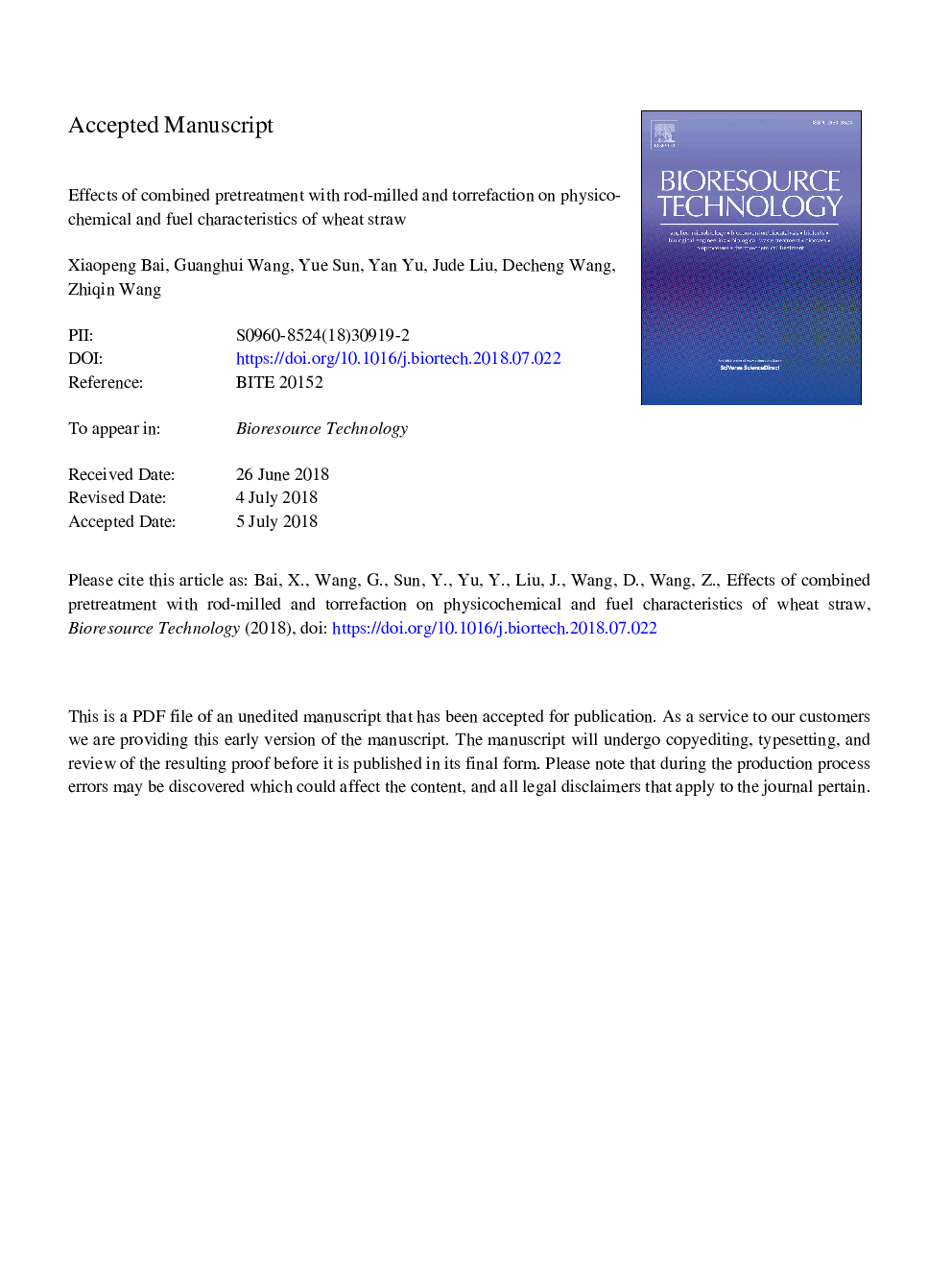| Article ID | Journal | Published Year | Pages | File Type |
|---|---|---|---|---|
| 7066280 | Bioresource Technology | 2018 | 37 Pages |
Abstract
The mechanism of rod-milling combined with torrefaction as well as its effects on physicochemical and fuel properties of wheat straw were investigated. Rod-milling and hammer-milling samples were torrefied under three temperatures (250, 275, and 300â¯Â°C) with a duration time of 30â¯min. The results indicated that combined rod-milling and torrefaction pretreatment (CRT) significantly elevated carbon content, higher heating value, fuel ratio, and reduced oxygen content and atomic H/C and O/C ratios in wheat straw. Moreover, CRT significantly reduced cellulose crystallinity, and increased the specific surface area and pore volume of wheat straw, which lowered the wheat straw's degrading pyrolysis temperature. These peak values appeared under 300â¯Â°C. Devolatilization index (Di) was improved by rod-milling pretreatment under identical torrefaction conditions except 275â¯Â°C. Therefore, the combination of rod-milling with torrefaction under 300â¯Â°C has the advantage of enhancing fuel properties of lignocellulosic biomass materials.
Related Topics
Physical Sciences and Engineering
Chemical Engineering
Process Chemistry and Technology
Authors
Xiaopeng Bai, Guanghui Wang, Yue Sun, Yan Yu, Jude Liu, Decheng Wang, Zhiqin Wang,
